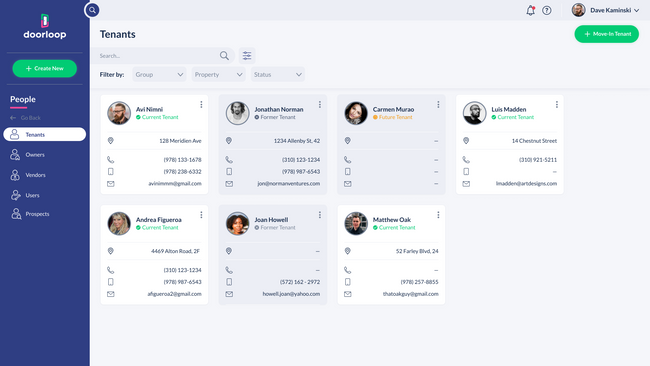The Best Affordable Housing Property Management Software
Affordable housing property management systems are often pretty similar between vendors. We reviewed each product with compliance, reporting, and bank reconciliation features in mind to bring you our top picks.
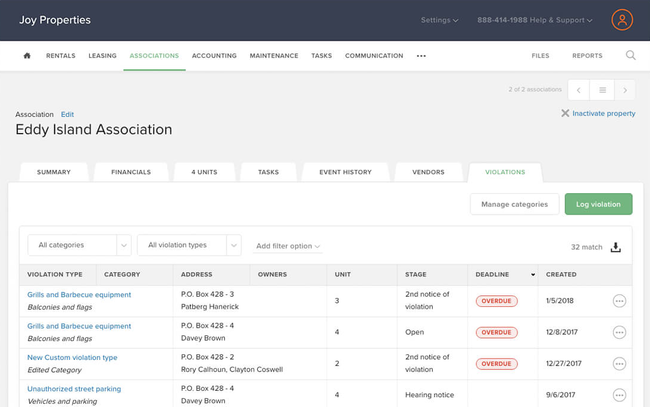
- Mobile inspections
- In-person cash payment support
- Rent allocation
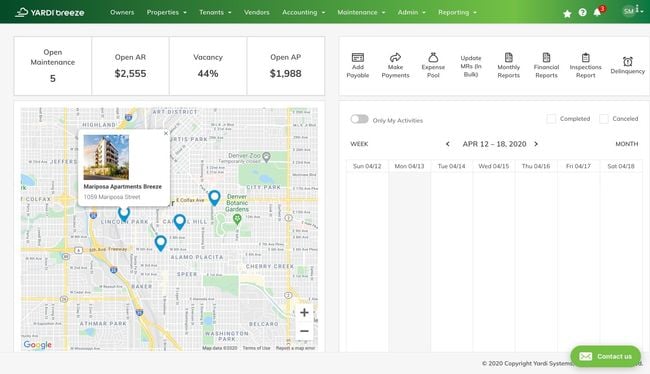
- Integrates with Yardi construction management system
- Accounting capabilities
- Affordable housing compliance
Affordable housing property management software is a specialized tool used by landlords and government agencies that own low-income housing properties. The system helps them comply with regulations, conduct inspections, and run reports. We reviewed popular solutions using our advanced review methodology and ranked our results below.
- DoorLoop: Best Overall
- Buildium: Best for Affordable Housing Providers
- Yardi Breeze: Best for Construction Companies
- AppFolio: Best for Public Housing Authorities
- RealPage: Best for Real Estate Investors
- Innago: Best for Independent Landlords
1 DoorLoop - Best Overall
Why We Chose It: We chose DoorLoop as our best overall option because of its strong features tailored to affordable housing property management. Its streamlined payment system effectively supports rent and subsidy tracking from government programs such as Section 8 and Low-Income Housing Tax Credit (LIHTC). This feature is essential for affordable housing owners, as they can connect any bank account and automatically reconcile payments.
We also like DoorLoop’s document management module, which lets owners keep files and legal papers in one central hub. Users can also share files such as compliance records and inspection reports with government entities, ensuring full adherence to regulations from the US Department of Housing and Urban Development (HUD). These capabilities and a user-friendly interface make DoorLoop our top choice for managing affordable housing.
DoorLoop starts at $59/month billed annually, including core features like a tenant portal and online payments. That being said, we don’t like that bank account reconciliation isn’t available until the Pro plan at $119/month.
2 Buildium - Best for Affordable Housing Providers
Why We Chose It: We found Buildium best for affordable housing providers like non-profits because of its reporting and mobile functionality. It earned its 8.8 score through its rent allocation capabilities, which automatically separate rent amounts paid by tenants from those paid by government subsidies. Providers can then run reports to see income based on the different payment methods.
We also found Buildium’s mobile app capabilities noteworthy. Management can conduct mobile property inspections, using pre-built or customized templates to streamline the process and stay compliant. The app also offers mobile rent collection, including cash and physical checks, allowing tenants to pay in person. However, one aspect of Buildium we don’t like is the $99 bank account set-up fee in the basic plan.
3 Yardi Breeze - Best for Construction Companies
Why We Chose It: We like Yardi Breeze best for construction companies building affordable housing and looking to sell or keep the buildings and rent them out. Yardi can handle both, as its construction management software integrates easily with Yardi Breeze, offering a complete solution and earning an 8.5 score.
We also like Yardi Breeze’s affordable housing property management tools like vacancy, prospect, asset, and income tracking. These allow companies to automate workflows to reconcile subsidy transactions and manage vacancies. The system even offers accounting and accounts payable, helping construction companies view financial information on all properties and customize financial statements. One drawback is that affordable housing features are only available on the Premier plan, which is $3/unit/month.
4 AppFolio - Best for Public Housing Authorities
Why We Chose It: We found AppFolio best for government agencies that own and operate affordable housing units. We like its integrated reporting functions that support LIHTC and HUD compliance by maintaining a single system of record for both contracts for easy reference. Users can also submit Project-Based Section 8 certifications into TRACS (Tenant Rental Assistance Certification System).
We also found AppFolio’s program management features effective. Agencies can add and update income and rent limits, unit reservations, and utility allowances for streamlined management. Additional features, including HOTMA (Housing Opportunity Through Modernization Act of 2016) integration and transaction consolidation, make this a good choice for public housing authorities. However, we don’t like that affordable housing capabilities are only available on the mid-tier Plus plan at $3.20/unit/month, which can be pricey for some.
5 RealPage - Best for Real Estate Investors
Why We Chose It: We included RealPage because its features suit commercial real estate investors who include affordable housing in their portfolios. The system includes compliance and reporting capabilities, including the 50058 Public Housing program and Rural Housing regulations, adhering to all affordable housing properties.
We also like RealPage’s Business Intelligence module, which provides real-time visibility into revenues, compliance, and rent per subjournal. It also allows owners to see recertification statuses for their entire portfolio, so they can identify when certifications are upcoming or past due. The software offers online leasing that has streamlined tenant screening and applications with electronic signatures, getting new residents moved in faster. One aspect we don’t like about RealPage is that it does not disclose its affordable housing prices publicly.
6 Innago - Best for Independent Landlords
Why We Chose It: We found Innago best for independent landlords who own just one or two affordable housing properties. The system is completely free for landlords to use, with no setup fees, monthly subscriptions, or contracts, making it the most affordable option on the market. The only fees incurred are by tenants, with per-payment charges for ACH, credit, and debit cards.
We also like Innago’s flexibility for landlords, as it allows them to waive late fees and create custom policies. This is ideal for independent low-income housing owners who may have a more personal relationship with the tenants than commercial owners. The system complies with standard regulations like Section 8 and customizable applications that screen for income qualifications. One downside we found during our research is that Innago does not accept cash payments from tenants, which can be limiting for some.
7 Entrata
Why We Chose It: We like Entrata as another good option for mid to large-sized property owners. Specifically, we found its streamlined workflows effective for LIHTC processes, including step-by-step certification instructions, tax compliance, and reporting for affordable housing-specific tasks. This helps managers and owners efficiently navigate complex compliance processes.
We also like that Entrata includes integrated purchasing, residential, and facilities management modules, making it an extensive property management system. Its ResidentPay app allows tenants to make prompt payments using several different methods, including money orders and checks, allowing for flexibility. Its centralized dashboard helps management stay on task with to-do lists and reports, enabling efficient workflows. Because of the wide range of features, some users have reported a high learning curve.
What is Affordable Housing Property Management Software?
Affordable housing property management software is a tool used by property owners and government agencies that includes specific features for low-income properties. These features include compliance with regulations like Low Income Housing Tax Credit (LIHTC), subsidy tracking, document management, and income verification.
In addition to affordable housing-specific tools, these systems include broader property management](/roundups/best-property-management-software/) features like rent collection, accounting, and work order management. One of the main differences between these is who uses them, as many affordable housing properties are owned by providers like non-profits, government agencies, and even construction companies that build the property and then rent it out themselves.

Key Features
- Compliance Management: Manage compliance for different affordable housing programs such as LIHTC, HUD, and Section 8. Submit all required documentation like tenant certifications and subsidiary reports to TRACS (Tenant Rental Assistance Certification System).
- Tenant Portal: Provide tenants with a mobile app or web application to pay rent with credit/debit cards, ACH, or check. It also allows them to submit maintenance requests and view lease agreements.
- Document Management: Manage important documents such as files, certifications, and leases for easy access and reference.
- Income Verification: Verify tenant prospects’ income to ensure they are within a low-income housing window.
- Transaction Allocation: Automatically separate tenant payments and government subsidies for accurate reporting.
- Accounting: Manage the business’s cash flow, general ledger, and accounts payable. Generate financial reports and track budgets.
- Inspections: Perform compliant inspections of affordable housing properties and receive alerts when necessary.
- Waitlist and Applicant Tracking: Maintain waitlists and applications, conduct screenings, and ensure applicants’ eligibility.
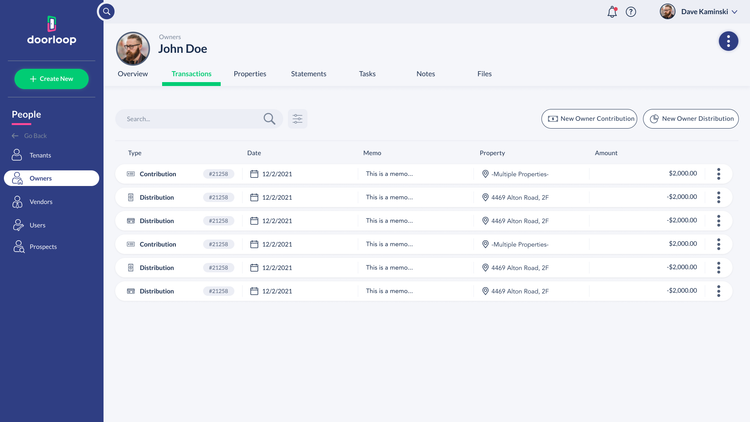
Primary Benefits
Increased Organization
Managing affordable housing properties requires lots of paperwork and filing, which can become overwhelming without strong organizational skills. Affordable housing property management systems allow owners and management to go digital and eliminate complex spreadsheets and desktop folders by keeping all electronic documents in one place. This makes it easy to access tenant files, compliance certifications, and lease agreements for every property.
Accurate Finances
Affordable housing property management systems allow owners to allocate rent payments and government subsidies into separate categories automatically. This helps run financial reports on these metrics separately, giving more visibility into revenue channels. Also, expenses and revenues are reconciled for all properties, giving owners a breakdown of each property’s financial situation, which can lead to better-informed decision-making.
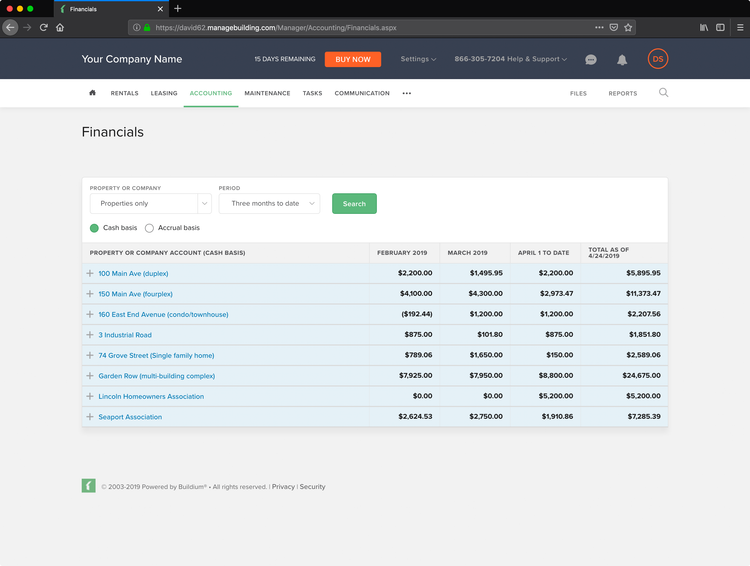
Fewer Vacancies
Affordable housing property management software offers prospect tracking and streamlined applicant screening to help owners fill vacancies faster. Users can also be alerted when contracts are coming to a close, helping them prepare to put out a new listing. Owners can determine applicant eligibility faster with automated processes so there aren’t delays in approving eligibility.
Pricing
Affordable housing property management systems can range between $0 and $2,000/month. The cost depends heavily on the number of units your business manages and which system best suits your needs. Some systems, like AppFolio and Yardi Breeze, are priced per unit/month, while others, like DoorLoop and Buildium, are offered in tiered packages that increase with the desired features. Some software such as Innago are completely free for the property manager but require transaction fees for tenant payments. Ultimately, these systems’ prices often differ for each company due to per-unit pricing ranging from $0.80 to $5/user.

